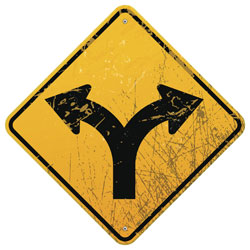Critics Say Intersection and Road Design Increase Risk to Pedestrians
 It’s become a far too common occurrence—a motorist parks on the street and opens the traffic-side door without looking, putting the open door directly in the path of an oncoming vehicle, or even worse, a cyclist. In a study conducted in Chicago earlier this decade, researchers found that “dooring crashes”—where bicyclist collided with the open door of a parked vehicle—accounted for almost one in five bicycle-related accidents (19.7%). A similar study in Boston found that about one in ten bicycle crashes involved “dooring.”
It’s become a far too common occurrence—a motorist parks on the street and opens the traffic-side door without looking, putting the open door directly in the path of an oncoming vehicle, or even worse, a cyclist. In a study conducted in Chicago earlier this decade, researchers found that “dooring crashes”—where bicyclist collided with the open door of a parked vehicle—accounted for almost one in five bicycle-related accidents (19.7%). A similar study in Boston found that about one in ten bicycle crashes involved “dooring.”
The problem is not a new one, though. Unbeknownst to most people, so-called “dooring laws” have been on the books in some states since 1956. Over the past 50 years, most states and many metropolitan areas have either enacted legislation requiring motorists to use reasonable care before disembarking from a vehicle, have mounted public service campaigns to make motorists more aware of the risks associated with opening a door into traffic, or have put both measures in place. Only ten states have no dooring law. All but two of the states with dooring laws also make it illegal to leave a door open longer than necessary to load or unload a vehicle.
Cycling advocates say that both the infrastructure that has been created for bicycling, as well as many new bicycling laws, have increased the risk of dooring accidents. For example, they point to the proliferation of bicycle lanes between road and curb, which may actually require that bicyclists ride in the path of an open door. Furthermore, some bicycle laws mandate that riders be as far to the right as possible, placing them directly in the door zone.
Contact Us
At Taylor & Boguski, we bring more than 70 years of combined legal experience to injured people throughout New Jersey. For a free initial consultation, contact our office online or call us at 856-234-2233.


 If you or someone you love has suffered a traumatic brain injury (TBI), your needs can be great. You may require long-term and constant care, may need to have your home retrofitted to meet your needs, and may have to have in-home continual care. When insurance, public assistance and personal resources are inadequate to meet your needs, the state of New Jersey offers help through the Traumatic Brain Injury (TBI) Fund.
If you or someone you love has suffered a traumatic brain injury (TBI), your needs can be great. You may require long-term and constant care, may need to have your home retrofitted to meet your needs, and may have to have in-home continual care. When insurance, public assistance and personal resources are inadequate to meet your needs, the state of New Jersey offers help through the Traumatic Brain Injury (TBI) Fund. The Illinois state legislature is hearing debate on a bill that would provide more protection to persons injured on the property of others. In Illinois, as in other states, a landowner generally has a duty to maintain residential or commercial premises so as to minimize the risk of injury to anyone legally on the property. The Illinois statute mandates “reasonable care” on the part of landowners, but a 2003 court case held that conditions that are “open and obvious” do not fall under this duty. The proposed law is an effort to change that.
The Illinois state legislature is hearing debate on a bill that would provide more protection to persons injured on the property of others. In Illinois, as in other states, a landowner generally has a duty to maintain residential or commercial premises so as to minimize the risk of injury to anyone legally on the property. The Illinois statute mandates “reasonable care” on the part of landowners, but a 2003 court case held that conditions that are “open and obvious” do not fall under this duty. The proposed law is an effort to change that. Pedestrian injuries and fatalities have been steadily on the rise since 2009, with an increase of nearly 650 pedestrian deaths nationwide in just three years. A study by the National Complete Streets Coalition found that nearly 50,000 pedestrians were killed in motor vehicle accidents between 2003 and 2012, and nearly 700,000 injured. One of the principal reasons, according to personal injury lawyers and accident reconstruction specialists—more American roadways and intersections are being designed to enhance motor vehicle traffic, at the expense of the lives of pedestrians.
Pedestrian injuries and fatalities have been steadily on the rise since 2009, with an increase of nearly 650 pedestrian deaths nationwide in just three years. A study by the National Complete Streets Coalition found that nearly 50,000 pedestrians were killed in motor vehicle accidents between 2003 and 2012, and nearly 700,000 injured. One of the principal reasons, according to personal injury lawyers and accident reconstruction specialists—more American roadways and intersections are being designed to enhance motor vehicle traffic, at the expense of the lives of pedestrians.  If you live in New Jersey, you expect that the area will be blanketed with snow at some point during the winter, and you know that ice storms and icy sidewalks can be a common hazard from October into April. But it begs the question—what are the duties of a landowner with regard to snow and ice?
If you live in New Jersey, you expect that the area will be blanketed with snow at some point during the winter, and you know that ice storms and icy sidewalks can be a common hazard from October into April. But it begs the question—what are the duties of a landowner with regard to snow and ice?  As a general rule, most personal injury claims are based on a legal theory of negligence. For a defendant’s actions to be considered negligent, a jury must find that the conduct was less than what a reasonable person would have done in the same situation. A “reasonable” person is customarily identified as an “average person of ordinary prudence.”
As a general rule, most personal injury claims are based on a legal theory of negligence. For a defendant’s actions to be considered negligent, a jury must find that the conduct was less than what a reasonable person would have done in the same situation. A “reasonable” person is customarily identified as an “average person of ordinary prudence.”  When you have suffered a physical injury because of someone else’s carelessness or negligence, the measure of your losses can be pretty straightforward. Things become far more complicated when most of the injury is emotional or psychological. You have a right, though, to pursue damages if the wrongful acts of another person caused you unnecessary stress, anxiety or mental anguish.
When you have suffered a physical injury because of someone else’s carelessness or negligence, the measure of your losses can be pretty straightforward. Things become far more complicated when most of the injury is emotional or psychological. You have a right, though, to pursue damages if the wrongful acts of another person caused you unnecessary stress, anxiety or mental anguish. When you are unable to work because of injury or illness, you can look to private or employer-sponsored disability insurance. But you are not without options if you don’t have this type of coverage. Regardless of your age, if you meet the requirements, you can receive payments under a Social Security disability insurance or Supplemental Security income claim.
When you are unable to work because of injury or illness, you can look to private or employer-sponsored disability insurance. But you are not without options if you don’t have this type of coverage. Regardless of your age, if you meet the requirements, you can receive payments under a Social Security disability insurance or Supplemental Security income claim. According to a recent study, nearly 20,000 bicyclists were injured in collisions with motor vehicles during a ten year period. Not surprisingly, 81 of those accidents proved fatal to the bicyclist.
According to a recent study, nearly 20,000 bicyclists were injured in collisions with motor vehicles during a ten year period. Not surprisingly, 81 of those accidents proved fatal to the bicyclist.